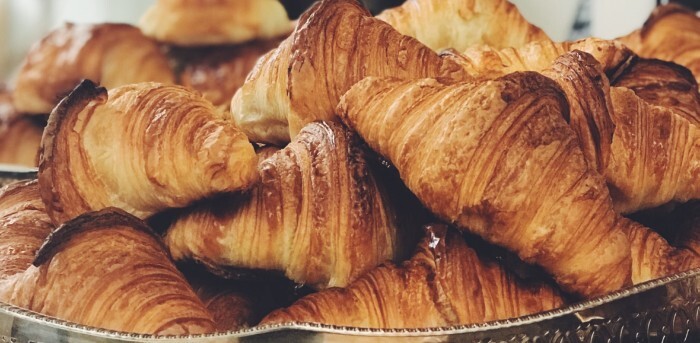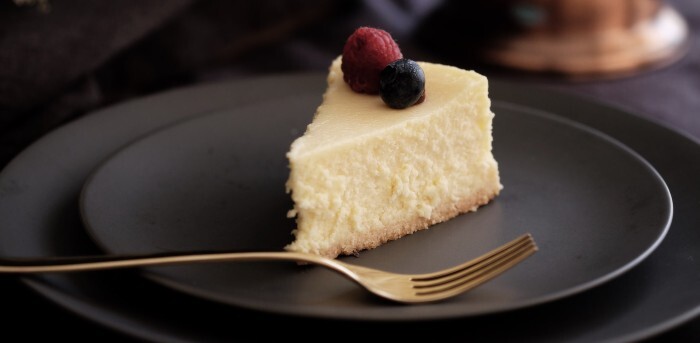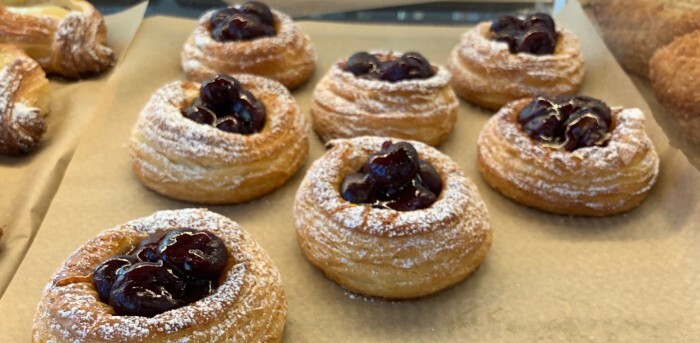15 Foods That Aren't From Where We Thought

Gone are the days when you were stuck eating whatever your grandma learned how to make from her grandma. Today, you can host an international culinary gang bang if you want, but in the process of globalizing food, some people became fusion pioneers, tried to pull one over on us, or just plain got confused. The result is putting a lot of things in our mouths and not knowing where it’s been.
Philly Cream Cheese is From New York

When the inventors of cream cheese were trying to come up with a name for their product in 1880, they settled on “Philadelphia cream cheese” because the city was known to be off the chain, dairy-wise, even though everything about the product was distinctly New Yorkian. Basically, everything you know is a lie.
Hawaiian Pizza is Canadian

Everyone’s least favorite flatbread could more accurately be called “Hawaiian-inspired pizza,” as it was created in Ontario by a Greek immigrant inspired by the sweet-and-savory flavors of Americanized Chinese food to capitalize on the growing Tiki trend. Did you get all that? We can say it again slower.
Swedish meatballs Are Turkish
In the 18th century, King Charles XII of Sweden was temporarily exiled to the Ottoman Empire (you know how these things go), where he discovered the real Turkish delight: meatballs. When he was allowed back, he brought the wads, called kofte by their inventors, back with him and apparently decided they were Swedish now. It was basically the colonial culinary version of the “I Made This” meme.
French Fries Are Belgian (And Kind of Spanish)

Potatoes are a distinctly New World food, first brought to Europe by Spanish explorers and sliced and fried in Galicia in the 16th century, but the crispy little salt delivery vehicles didn’t really take off until Spanish colonists brought them to Belgium, which was called the Spanish Netherlands at the time, just to confuse us in the future. By the 18th century, they’d made their way to France, where Americans noticed them, which is factually the moment when everything starts existing.
German Chocolate Cake is American
German chocolate cake isn’t named after the country but an English (or possibly American) guy named Sam German who invented a new style of baking chocolate in 1852. It was definitely popularized in America in the ‘50s, where it was initially known as German’s Chocolate Cake, but you know how Americans feel about unnecessary punctuation, so that apostrophe soon got dropped and a lesson was (not really) learned about naming people after places.
Croissants Are Austrian

In 1838 or 1839, an Austrian guy named August Zang opened a Viennese bakery in Paris, and the French went nuts for his crescent-shaped bread rolls, called kipferl. Being French, though, they were pretty sure they could do it better, so they substituted puff pastry (then usually used as an edible bowl for real food, not on its own), named it their own word for “crescent,” and ran him out of town (or it just became safe to return to Vienna, whatever).
Chicken Tikka Masala is Scottish
The most likely inventor of chicken tikka masala was a British Pakistani chef named Ali Ahmed Aslam, who was running a curry house in Glasgow in the ‘70s when a customer complained that his chicken was too dry. To appease the man (or possibly get back at him), Aslam dumped a bunch of tomato soup on it, and as usually happens when someone finds a new way to dump stuff, a British classic was born.
Vindaloo is Portuguese

“Vindaloo” is actually a mispronunciation of the Portuguese name (carne de vinha d’alhos) of the dish, which was brought to India by Portuguese explorers in the 15th century. It was improved considerably by Indian chefs, but a key ingredient, chile peppers, was actually brought over by the Portuguese from America, meaning your curry made a full circle back to your plate.
Tempura is Also Portuguese
The Portuguese really don’t get enough credit. They also introduced tempura, then called peixinhos da horta, to Japan after accidentally landing there in 1543 and deciding to stay a while. They were kicked out almost 100 years later for preaching Christianity, but surely showing you how to fry food in delicious batter is worth a little religious corruption.
Fortune Cookies Are Japanese

On Japan's part, fortune cookies came from 19th-century Kyoto and into America with Japanese immigrants without ever touching China. We only associate them with Chinese restaurants because Americans didn’t want to eat Japanese food, so those Japanese immigrants opened “Chinese” restaurants instead, then actual Chinese entrepreneurs snapped them up after Roosevelt forced Japanese Americans to give up their businesses during World War II. The whole thing was a real ouroboros of cultural appropriation.
Egg Rolls Are American

Those Chinese-American restaurateurs also created the egg roll as a version of the lighter and crispier spring roll that would appeal more to their American customers, who we all know hate the lighter versions of things.
Sauerkraut is Chinese

It may be primarily known today as a staple of Oktoberfests and Wisconsin tailgates, but fermented cabbage can actually be traced back to the Great Wall of China, where workers who subsisted on rice and cabbage in the summer soon realized they’d need a way to preserve their leaf of choice for the winter. It was a big wall, guys.
Fajitas Are From Texas
Fajitas were the best of a bad situation when Texas ranchers in the 1930s paid their Mexican cowboys partially in less desirable cuts of beef, like skirt steak, proving that some spices and a tortilla can make even labor exploitation taste great.
Cheesecake is Greek

People have been asking “what if we put sugar in the cheese?” ever since Ancient Greece, when cheesecake was a popular wedding cake and even served at the first Olympic games. “New York cheesecake” only became a thing after cream cheese was invented, despite the brotherly lovely ruse.
No One Wants to Claim Danishes

Legend has it that Danishes were invented by accident by a thoughtless French chef in the 17th century, who opened a bakery in Paris to sell the “thousand leaves” pastries that became so popular that he franchised to Italy, where Austrian tourists apparently noticed them. Fast forward to 1850, when striking Danish bakers were scabbed over by bakers from Vienna, who didn’t know how to make Danish pastries, so they made … Danish pastries. It became a hit in Denmark, where it’s called a “Viennese,” while Germans call it a “Copenhagener” and Americans, of course, a “Danish,” because despite its universal popularity, no one apparently wants to take the credit. Poor Danishes. They only want to be loved.
Top image: Karsten Winegeart/Unsplash